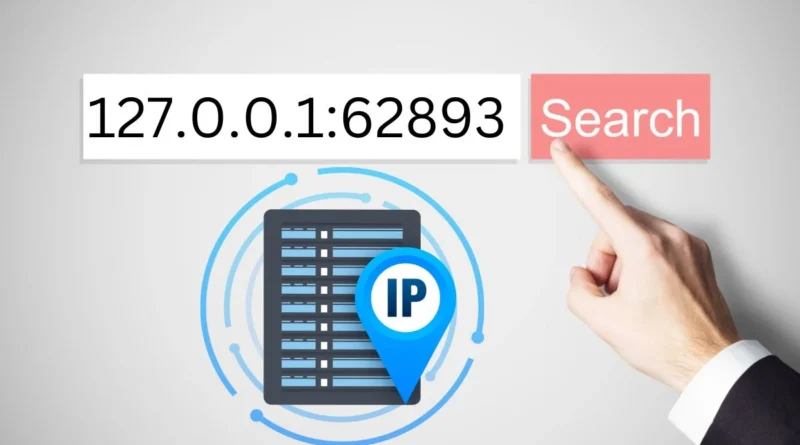What Is 127.0.0.1:62893? A Complete Guide to Localhost Ports
The world of networking includes countless ports and addresses, but 127.0.0.1:62893 stands out for a specific reason. Often seen in development logs or browser redirects, this combination of IP address and port number raises curiosity. What does it mean? Why does it show up? And should you be worried when you see it?
Let’s break it all down for clarity, simplicity, and technical understanding.
Understanding the IP Address 127.0.0.1
Before diving into the port, it’s essential to understand the IP address itself. The address 127.0.0.1 is universally recognized as the loopback or localhost address. Every computer uses this to refer to itself during network communications.
When a developer sets up a local server, the system uses 127.0.0.1 to serve applications directly from the machine. This process allows the developer to test software in a safe and isolated environment.
Crucially, this address never leaves your device. Because of that, it poses no direct security threat on its own.
What Is Port 62893?
Now that the IP address is clear, let’s explore the port number. A port is essentially a communication endpoint. It ensures that data travels to the correct process on a device.
Port 62893 is not one of the well-known or commonly used ports (like 80 for HTTP or 443 for HTTPS). Instead, it’s a dynamic or ephemeral port. The operating system typically assigns it temporarily for client-server communication.
So when you see 127.0.0.1:62893, your device is running a process that is temporarily using port 62893 to interact with the localhost.
Common Use Cases of 127.0.0.1:62893
You might wonder why this specific port shows up frequently. The reason lies in software development, especially when using frameworks or local servers.
1. Local Development Servers
Modern web development frameworks like React, Angular, and Vue often run on localhost using random high-numbered ports such as 62893. These servers allow developers to preview their web apps in real-time.
2. Database Connections
Database tools like MongoDB or MySQL may use high ports for internal or client connections. Sometimes, a database GUI will bind to 127.0.0.1:62893 during startup.
3. Debugging Tools
Integrated development environments (IDEs) such as Visual Studio Code or IntelliJ often launch local servers for debugging. These tools dynamically pick ports for safety and isolation.
Is 127.0.0.1:62893 Safe?
In most cases, 127.0.0.1:62893 is completely safe. It communicates only within your local machine. No external traffic can access it without direct intervention.
However, there are rare exceptions. If malware or malicious scripts run on your computer, they could potentially use localhost ports. Fortunately, modern antivirus software typically blocks suspicious activity quickly.
To ensure safety, monitor running processes and validate any unknown connections.
How to Check What’s Running on 127.0.0.1:62893
If you’re curious or concerned, you can investigate what service is using port 62893. Here’s how:
On Windows:
- Open Command Prompt.
- Type:
netstat -aon | findstr :62893 - Note the PID (Process ID).
- Then type:
tasklist | findstr [PID]
On macOS/Linux:
- Open Terminal.
- Type:
lsof -i :62893
These commands will reveal the exact program using the port.
How to Stop a Process on 127.0.0.1:62893
Once you’ve identified the program, you may want to stop it. Here’s how to proceed:
- On Windows, use Task Manager to end the corresponding process.
- On macOS or Linux, use:
kill [PID]
Replace [PID] with the actual process ID.
Be cautious not to terminate essential system processes. Always research the process before stopping it.
Why You Should Care About Ports Like 62893
Although it seems technical, understanding ports can help you in multiple ways.
Faster Debugging
If your development environment fails, recognizing a port conflict speeds up troubleshooting.
Improved Security Awareness
Knowing what ports are in use helps detect unauthorized activity early.
Better System Control
Managing port usage prevents performance issues and port collisions, especially when running multiple services.
How to Avoid Port Conflicts
Since 127.0.0.1:62893 is dynamically assigned, you may sometimes face port collisions. Use these strategies to avoid that:
- Manually set ports for key services.
- Use Docker or containers to isolate environments.
- Clear orphaned processes regularly.
- Configure your firewall to restrict unexpected port activity.
Can You Access 127.0.0.1:62893 from Another Device?
The short answer is no. The loopback address is not routable over a network. Any request to 127.0.0.1 from a remote machine will resolve to that machine’s own localhost, not yours.
If you want others to access your service, bind it to your actual IP address (like 192.168.1.5) and use proper port forwarding if needed.
When to Worry About 127.0.0.1:62893
You should only be concerned if:
- The port is open unexpectedly.
- It launches without your action.
- Your antivirus flags it.
- Unusual traffic patterns appear in monitoring tools.
Otherwise, this port is simply doing its job: helping developers and tools run locally.
Logging and Monitoring Localhost Activity
To stay proactive, consider using tools like:
- Wireshark (for packet monitoring)
- Process Explorer (for Windows task analysis)
- Netstat or Lsof (for port-level insight)
These utilities reveal hidden patterns and help keep your system secure and transparent.
Conclusion: 127.0.0.1:62893 Is Not a Threat
Ultimately, 127.0.0.1:62893 represents a temporary, local connection used by your computer. It’s not a virus, nor is it inherently risky. Instead, it serves a purpose in software development, testing, and debugging.
However, staying informed ensures you always remain in control. Now that you understand what this IP-port pair does, you can work with it confidently or investigate it wisely when needed.

